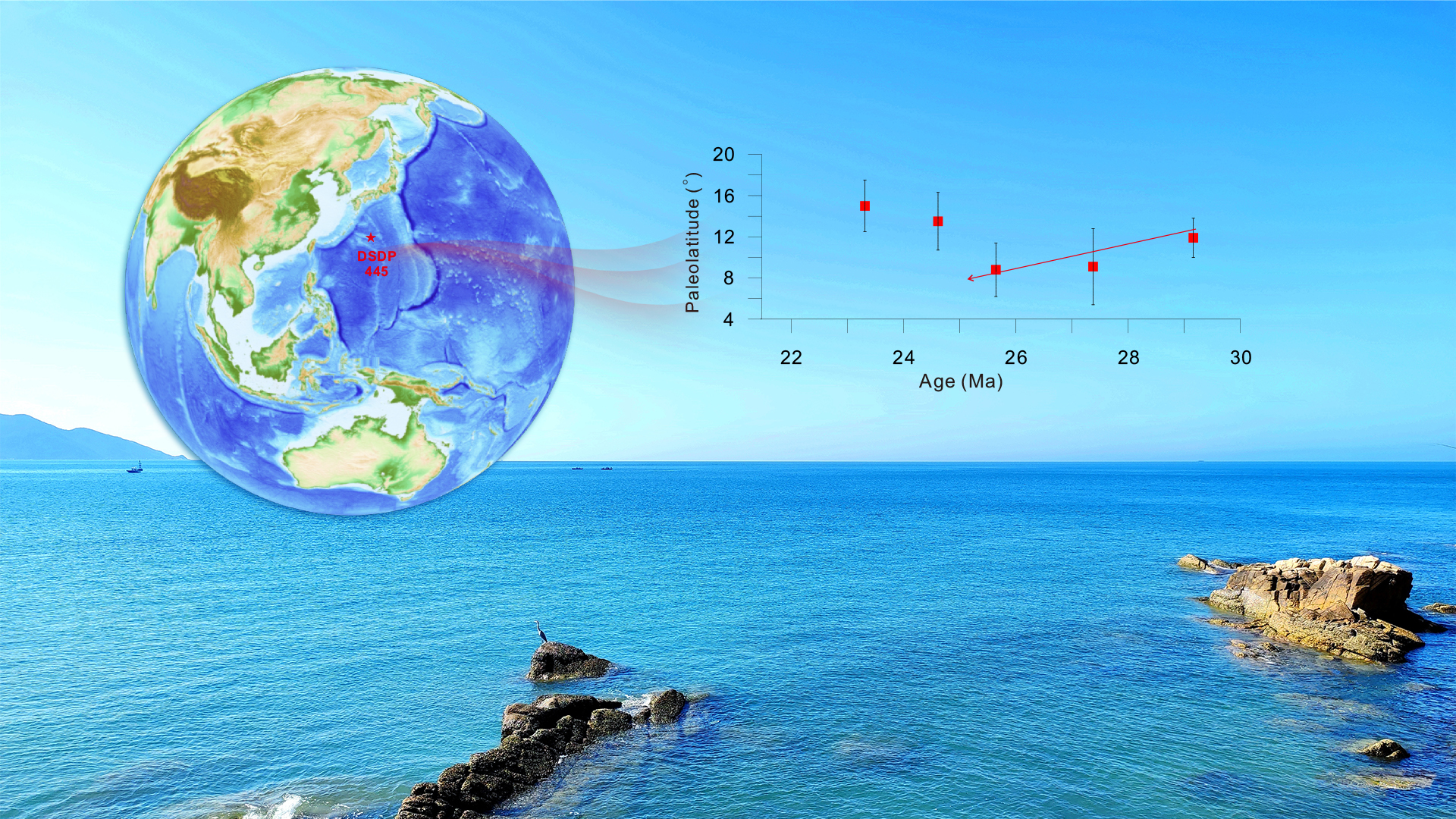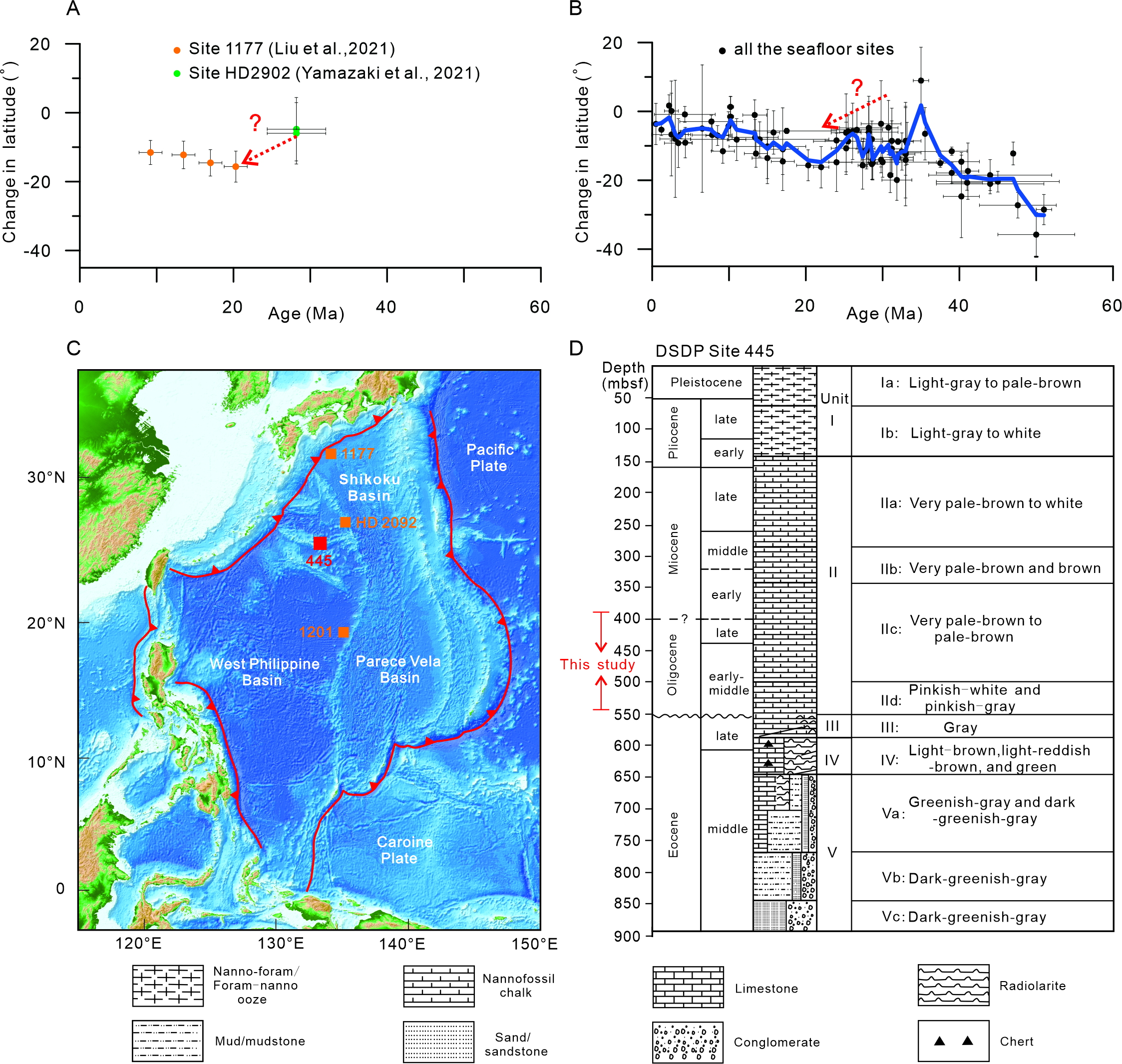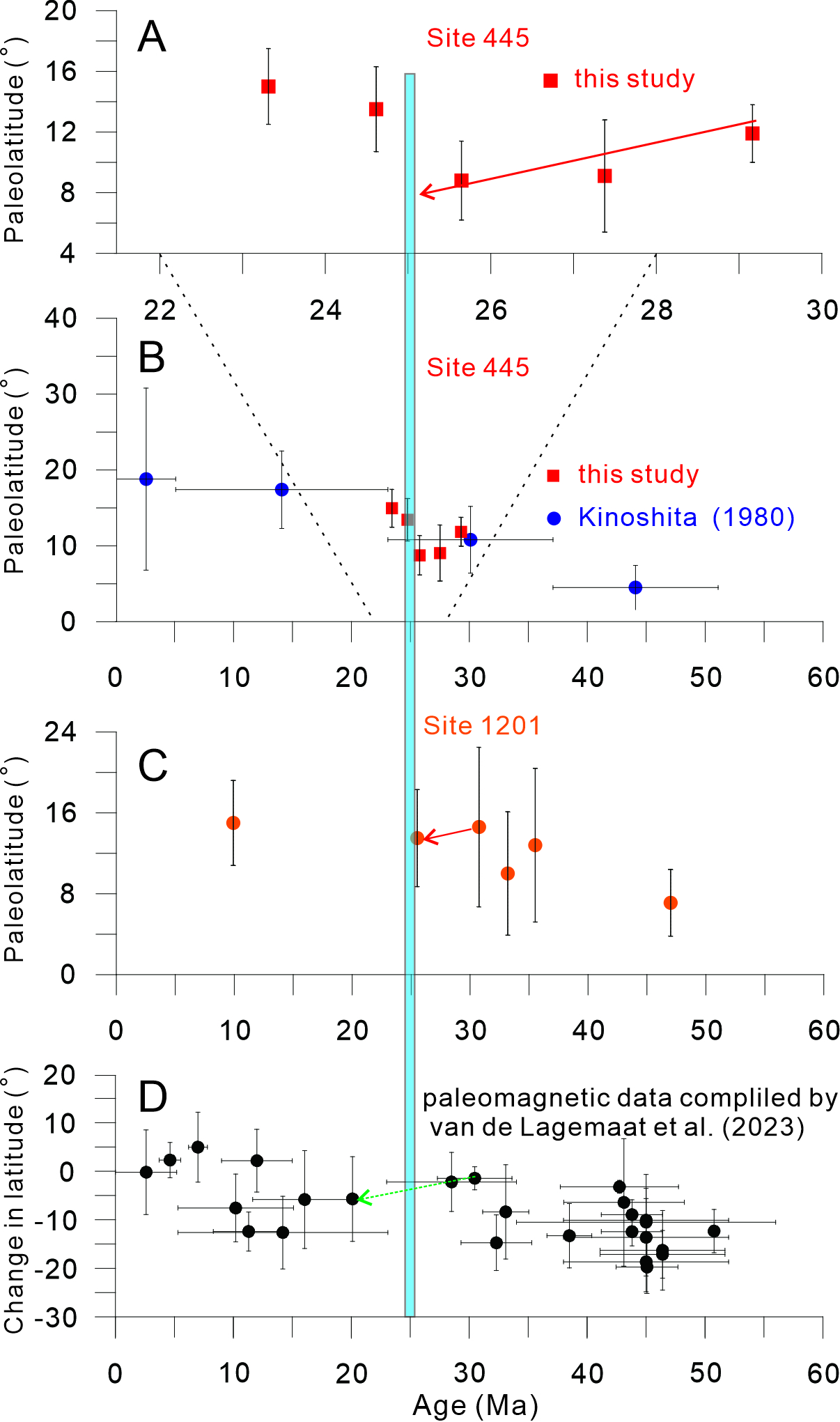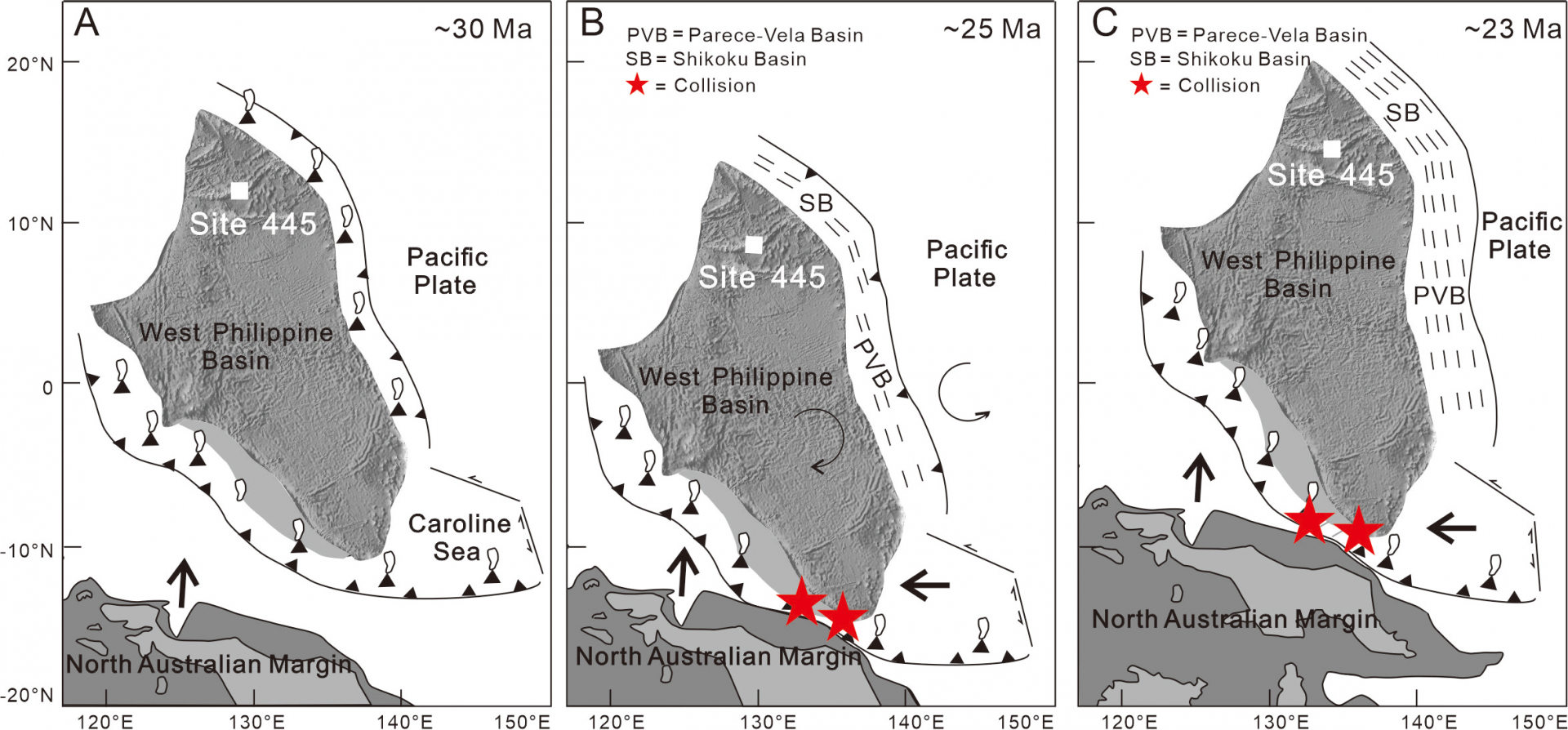Plate tectonics is a hot research direction in Earth science, which is crucial for understanding the mechanisms of Earth’s operation and its habitability. The Philippine Sea Plate (PSP) is located at the junction of the Eurasian Plate, the Pacific Plate, and the Indo-Australian Plate, and its tectonic evolution is of great significance to global plate reconstruction.
Previous studies have indicated that the PSP originated near the equator and gradually moved northward to its current position. However, this is only a first-order evolution model and cannot account for the observed inconsistencies in the northward drift distances among some regions in the PSP. Moreover, the paleolatitude and age errors of the PSP were large (Figure 1A & 1B), making it impossible to accurately determine the latitude changes (Figure 1B).

Chair Professor Qingsong Liu’s research team from the Center for Marine Magnetism in the Department of Ocean Science and Engineering at the Southern University of Science and Technology (SUSTech) has made important progress in understanding the paleolatitude evolution of the PSP.
Their work, titled “Complexity of the Oligocene meridional motion of the Philippine Sea Plate”, has been published in Geology.

Figure 1. (A, B) The change in latitude versus age for Sites 1177 and HD2092, and for all the seafloor sites. (C) Location map of Sites 445, 1177, and HD2092. (D) Stratigraphic column of Site 445.
The research team conducted high-resolution magnetostratigraphic and paleomagnetic research from Deep Sea Drilling Project Site 445 to reconstruct the exact paleolatitude evolution of the PSP. They established a magnetostratigraphic framework for the 30-23 Ma period of Site 445 and obtained five high-precision paleolatitude data (Figure 2A).
The results reveal a southward motion trend of the PSP during the 30-25 Ma period, after which the plate turned northward (Figure 2A). The new finding challenges the previously held belief that the PSP consistently migrated northward.

Figure 2. (A–C) The paleolatitude variation of Sites 445 and 1201. (D) Change in latitude for compiled paleomagnetic data. The red arrows indicate southward motion trend.
The study further suggests that the PSP was bounded by a subduction zone at 30 Ma (Figure 3A), with a slab subducting under the southern PSP. From 30 to 25 Ma (Figures 3A and 3B), the PSP moved southward, possibly due to the rollback of the subducted slab. At 25 Ma, the southward-moving PSP initiated a collision with the northward-moving Australian Plate (Figure 3B), resulting in a cessation of the PSP’s southward motion. After 25 Ma (such as 23 Ma), the Australian Plate pushed the PSP’s movement northward (Figure 3C). Considering that the counterclockwise rotation of the Pacific Plate and the break-off of the Indian slab also occurred at 25 Ma, the research team proposed a global tectonic reorganization event around 25 Ma.

Figure 3. Schematic model of the PSP tectonic evolution at (A) 30 Ma, (B) 25 Ma, and (C) 23 Ma.
This research enhances the understanding of the tectonic evolution of the PSP and is of great significance for understanding the global tectonic reorganization, as well as the evolution of global topography, paleoclimate, and resource enrichment mechanisms.
Dr. Wei Liu from Chair Professor Qingsong Liu’s group is the first author of the paper, with Qingsong Liu as the second and corresponding author, and SUSTech is the first affiliated institution. Other collaborators include Associate Professors Jiashun Hu and Ting Yang, Drs. Congcong Gai and Yang Zhou, and Ph.D. student Weijie Zhang.
Paper link: https://doi.org/10.1130/G52707.1
To read all stories about SUSTech science, subscribe to the monthly SUSTech Newsletter.
Proofread ByAdrian Cremin, Yingying XIA
Photo ByDepartment of Ocean Science and Engineering